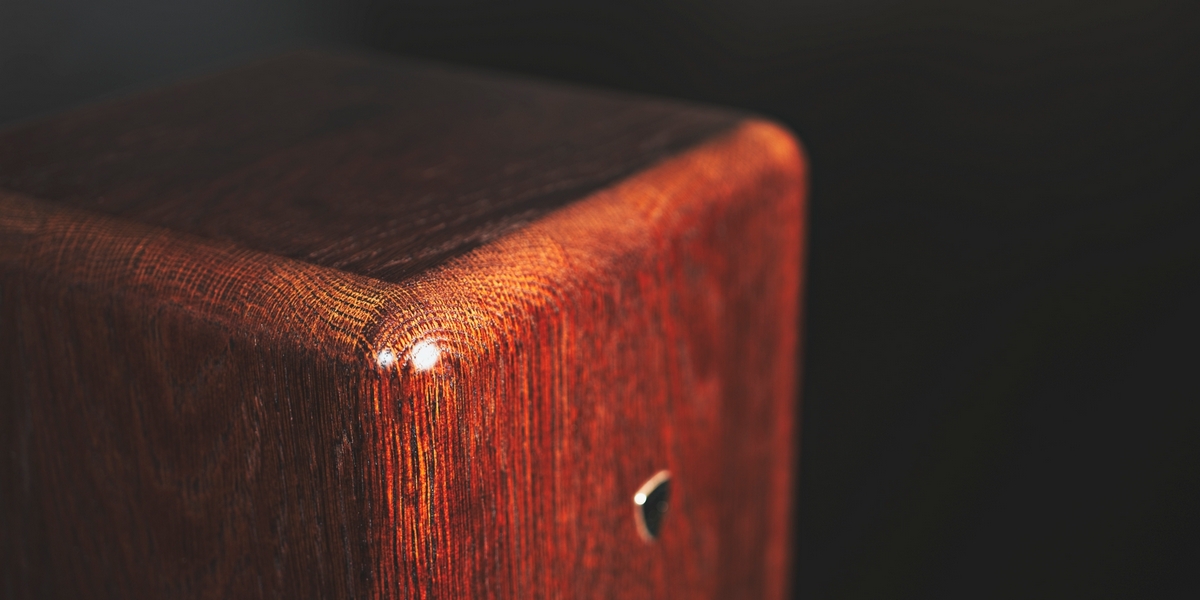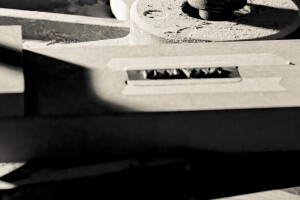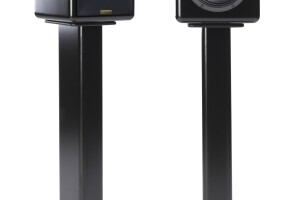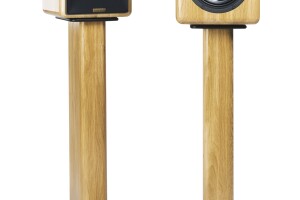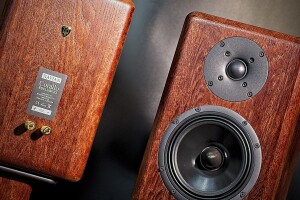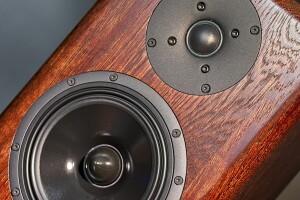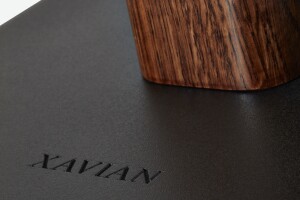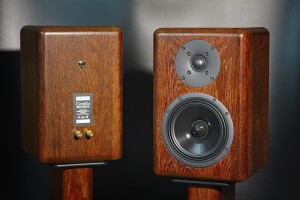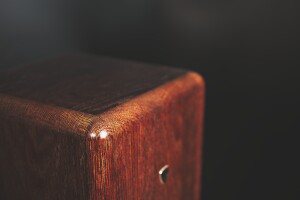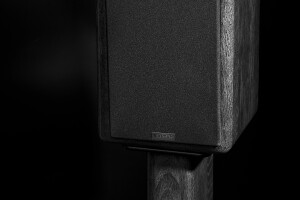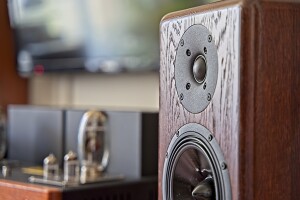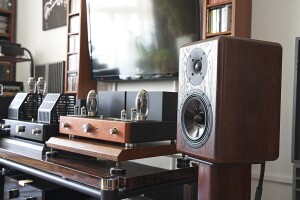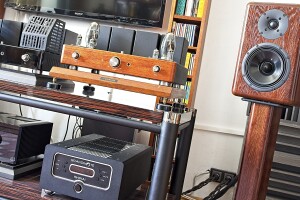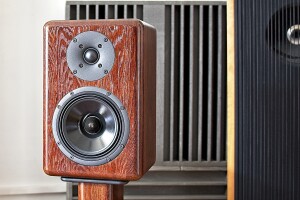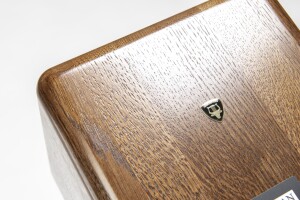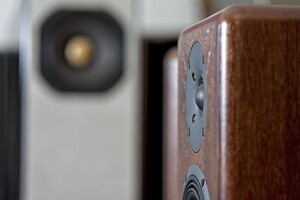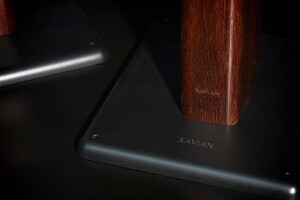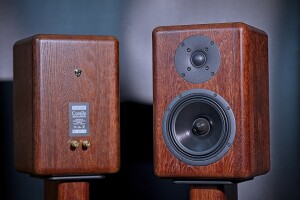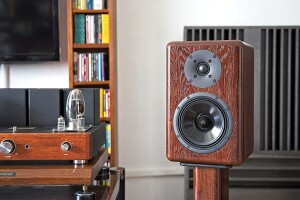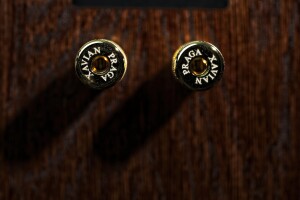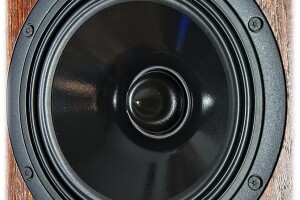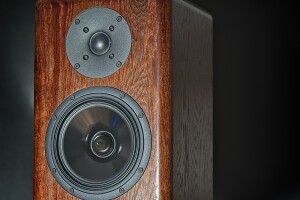Small, stand-mount loudspeakers featuring closed enclosure, looking like a million bucks, developed by manufacturer, who never sets on less than excellent performance. Doesn’t it sound interesting? I definitely believe it does. So let me introduce the gorgeous looking and (hopefully) equally great sounding Xavian Corallo Esclusivo.
Introduction
It took me a while to find an interview with Roberto Barletta (from 2011) in the depths of the Internet, which started my acquaintance with the man behind the Xavian brand. As probably most of our readers know, Xavian is a Czech company based in Prague. Yet its owner and chief designer is Roberto Barletta, who, as you can easily guess, is Italian. As he told me during the aforementioned interview, he was designing and building his first loudspeakers and amplifiers already as a young man. Then he worked in the audio industry in the sunny Italy, and then… one fine day, as some say, he was hit by a cupid’s arrow. If you know the story you realize that he had no choice but to follow his heart and a lovely Czech lady. That resulted in moving to a foreign country he knew almost nothing about. He didn’t speak the language, had to give up everything and everyone he knew and move to the beautiful Prague. He replaced wine with beer, pasta and pizza with dumplings, but kept his Italian sensitivity and love of beauty in its all forms. It took him two years to learn the language, but he also used this time to design new loudspeakers. Finally, in 1997, Roberto founded the Xavian, today a renown and highly valued brand both on our market, but also in many countries around the world.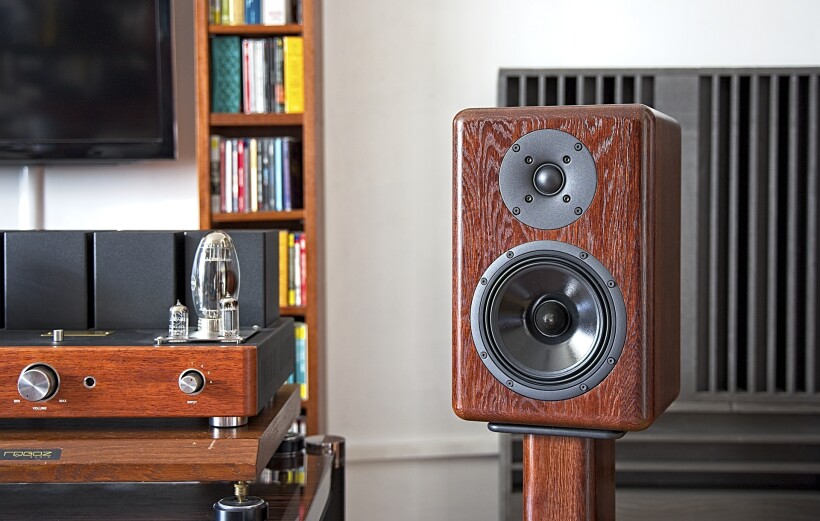
One of the distinctive features of the speakers Roberto designs, both those from the top Epica series, the tested Natura, Classic Series, Joy, or even the entry level Dolce Musica, is the high quality workmanship and finish. Obviously, the more expensive series look even better, offering a truly luxury feel, one may say, but in each model, regardless of the price level, you can simply see the hand or the sensitivity and love for beauty of a true Italian. After all, it is a nation that has been fond of art in all its forms, in creating beautiful, timeless things for centuries. I guess, that is why almost every Xavian model is simply a beautiful object, one that leaves no one indifferent. I mentioned that before in other reviews – Xavian loudspeakers are one of those audio products that you can buy just because you love the way they look, as they tend to please the eyes of those whole love gorgeous looking items. Two series particularly appeal to my aesthetic taste – the top Epica series and the more affordable, but equally beautiful Natura one. Based on that fact and because I am a fan of closed-box cabinets, which Xavian uses as often as vented ones, when I reviewed their current lineup a few months ago, my attention was primarily drawn to two new designs – the Corallo Esclusivo stand mount and the Stella Esclusivo floor standing speakers. The former were introduced first, so I asked for them for this review, but I truly hope I’ll have a chance to listened to the Stella in my room as well in a not too distant future.
I could keep telling you how good the Corallo Esclusivo looked in my room, how well they were made, how perfectly finished, but the longer I look at them, and they have been with me for several weeks now, the more I realize that this is one of those cases, where words are not able to fully convey what the eyes see. OK, I’ll admit, that probably it is, to some extent, a matter of my personal taste, or even the a “bias” towards loudspeakers with a beautiful wooden finish. On top of that, Roberto, coincidentally (or not, most likely not) chose for me an exceptionally beautiful Cogniac finish, one that appeals to me most among those available (although others look damn good as well!). Nevertheless, it it hard to image (from my perspective) that anyone, regardless of their taste, would not appreciate these gorgeous, fantastically made oak cabinets that look as if they were made entirely of one solid block of wood (which is not the case, but it is worth noting and giving the Xavian crew a well deserved credit for).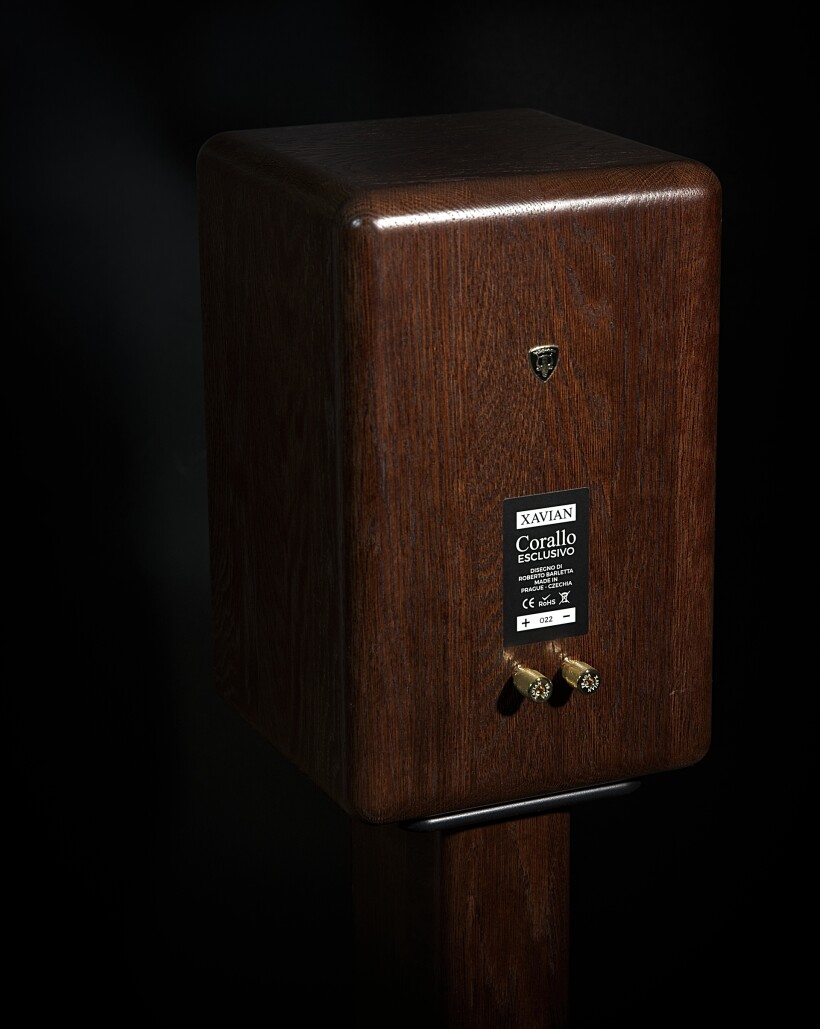
There are also several tiny, little things that contribute the this final so aesthetically pleasing impression, such as curved edges, magnetic grilles (i.e. no holes in the front panel), gold-plated speaker sockets mounted directly in the rear of each cabinet, plus a small, elegant nameplate and a tiny, characteristic manufacturer’s logo. The speakers can be bought separately or paired with perfectly matched, also partly made of oak wood, stands with nicely contrasting black plates (top and bottom). This is obviously a matter of taste, but for me the Corallo Esclusivo could be stored in Sevres as an exemplary design of modern, yet classic, stand-mount 2-way loudspeaker others should aspire to. Can their performance, considering quite reasonable pricing, match their good looks? We’ll get to that in a moment.
Design
The Corallo Esclusivo are small, 2-way bookshelf speakers featuring a closed enclosure. They measure only 355 x 230 x 236 mm, but they weigh 10 kg each. This is a result of using solid, beautifully made oak wood cabinet damped in appropriate areas with bituminous mats and foams. To achieve a targeted level of performance these speakers utilize selected, high-class components. In the aforementioned interview, Roberto explained why (then, 10 years ago) he used ScanSpeak drivers. According to him they guaranteed adequate quality, repeatable parameters from one unit to the other, plus his personal close contacts with their R&D department gave him an opportunity to suggest certain solutions, which allowed ScanSpeak engineers to further improve their products. Can there be some even better deal than such a close relationship with a driver manufacturer? As the current state of affairs proves, the answer is: yes. Using vast knowledge and practical experience of a loudspeaker designer, one can design one’s own drivers, create a separate brand for them, call it, say, AudioBarletta, and thus have a full control not only of the development but also the production phase, which takes place in our designer’s homeland, Italy. All the drivers are custom made according to Roberto Barletta’s specifications and thus perfectly fitting his requirements.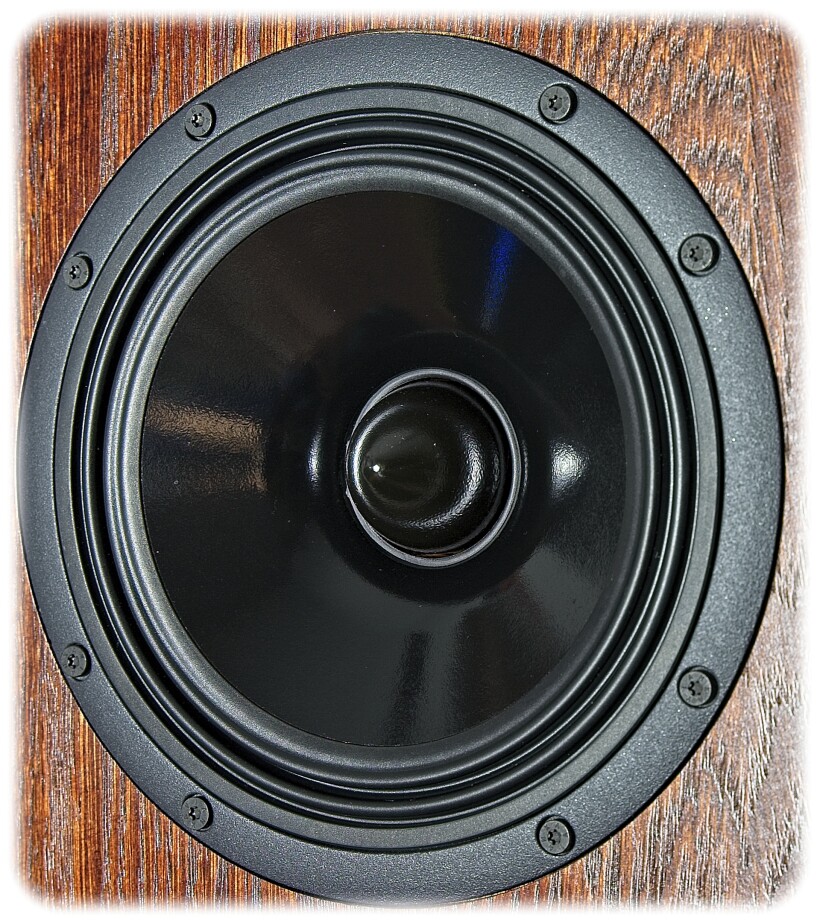
In the tested model, the Corallo Esclusivo, our designer used a 175 mm woofer with a paper, coated diaphragm and an extremely solid, cast aluminum-magnesium alloy basket. A hole was drilled in powerful magnetic system to facilitate cooling of the coil, and a phase corrector (name is self-explanatory) was used in the center of the diaphragm. The driver features a rubber two-fold suspension. The treble on the other hand, is reproduced by a 29mm soft dome. Behind it there is a small closed box that helps to reduce the resonance frequency of the diaphragm. The coil is wound with a flat, aluminum wire, and the cast metal front of the driver ensures proper dispersion of sound waves. The loudspeaker’s crossover, a proprietary solution called “zero phase”, uses high-class components, including Jantzen air coils and Mundorf capacitors. The board with the crossover is screwed to the internal side of the rear baffle. Manufacturer used a layer of felt between these two elements in order to damp unwanted vibrations. The crossover frequency is set at 2500 Hz, and the Corallo Esclusivo nominal impedance is 8 Ω with an efficiency of 87 dB. The make and finish of the cabinets and dedicated, optional (although, if you ask me, you have to get them too!) stands is simply fantastic, not something one comes across too often at this price level. The stands feature adjustable feet with felt pads at the bottom. They can be adjusted from above using an Allen key, which is quite a convenient solution. The speakers and stands can be, and I would even say should be, bolted together using the ready-made holes and screws included in the set.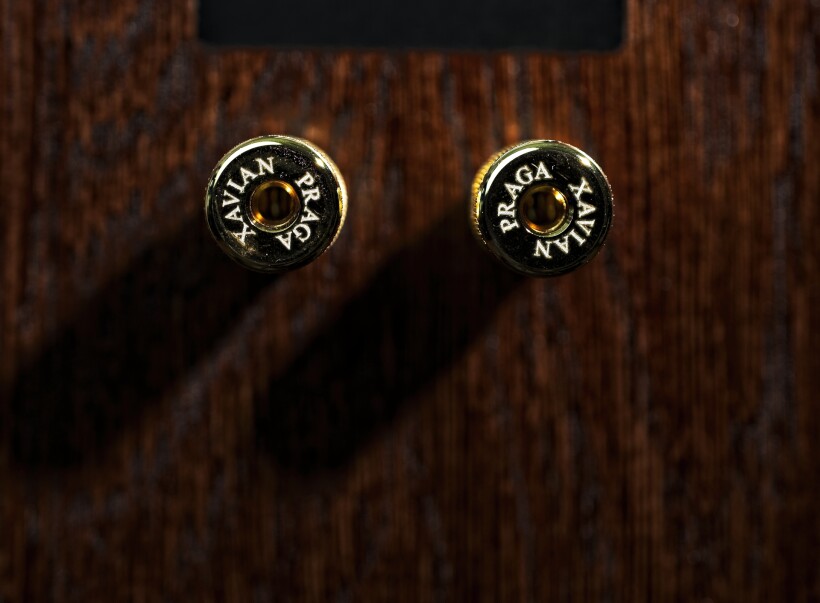
Sound
Let me start this part of the review of the Corallo Esclusivo with an anecdote, a true one, to be clear. When we talked with Roberto about this test, he proved he had a good memory, recalling my weakness for low power tube amplifiers. He asked if I had any relatively high power amplifier at my disposal, and when I confirmed, that I did, he was clearly relieved judging by his “thank god!” comment… He had his reasons, obviously. First of all the ideal environment for Corallo Esclusivo is a room slightly smaller than mine – say between a dozen or so to twenty square meters. The bigger room will require more effort on the amplifier part so that these not that big speakers could fill the whole space with sound. Secondly, these are closed cabinet loudspeakers, which translates into a lower efficiency and makes them more demanding recipient of the amplifier’s output. The manufacturer recommends combining them with amps able to deliver at least 30W output per channel. Fortunately I was able to comply, as during the test, I had several amplifiers that met these conditions, at my disposal. Namely, my trusted GrandiNote Shinai, i.e. the class A integrated offering 37W. There was also the excellent Accuphase E380 (120W at 8 Ω), the powerful hybrid LampizatOr Metamorphosis monaural beasts, whose output per channel, according to the manufacturer, reaches up to 350W, and finally the excellent Polish integrated from Circle Labs, called A200 (100W into 8 Ω) and Lavardin ISx Reference (45 W). None of these amplifiers had a problem with driving the Xavians, but if I were to point out my preferred setups, the last two performed with Czech speakers in a way, that best met my own preferences and taste.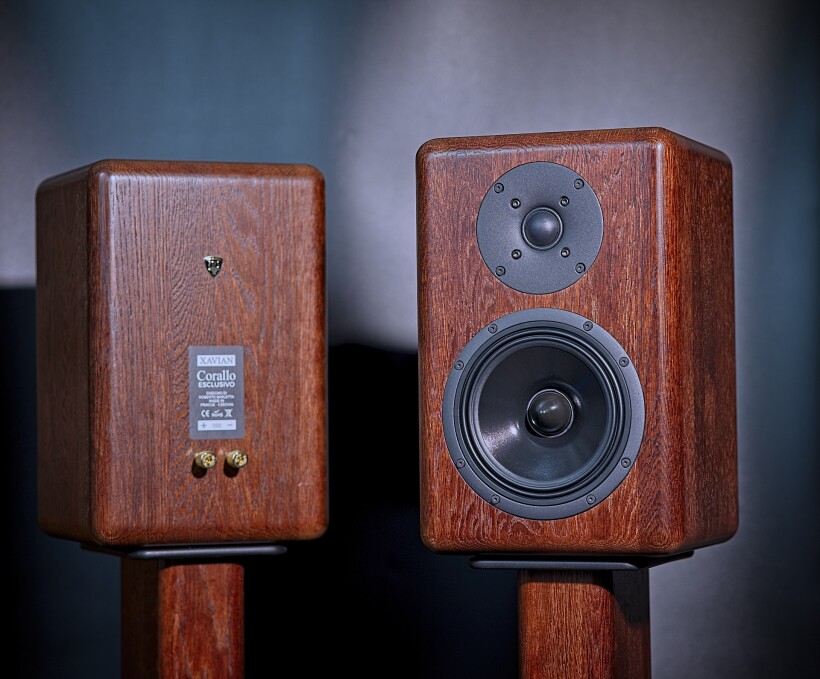
One of the advantages of closed enclosures in speakers is that it allows user more latitude when placing them in a room. What I mean by that is that a proximity to the wall behind speakers is not that big of an issue (as it may be with vented, back-firing designs). This is how Xavian advertises the Corallo Esclusivo – they will work perfectly when the space is an issue, when they need to be placed close to the wall, or on a desk, or shelf. However, considering their size and design, as well as the size of my room and my preferences resulted in me placing them quite far from the wall behind them, and thus closer to the listening position. Such setup has an additional advantage – it helps loudspeakers “disappear” from the room more easily, i.e. while listening the sound appears not to come from the speakers. I personally love this feature, that is much harder to achieve with floorstanders, and not all monitors can do that either. I toed the Corallo Esclusivo quite a bit in (together with the stands) so that the tweeters were pointing directly at my ears in my listening position. It was finally time to learn what this beauties had to offer in terms of performance.
The first listening session took place in the evening so I chose the appropriate repertoire for the the time of the day and the need to listen at lower volume levels. One of the albums I listened to was the Robert David Grusin’s “Discovered Again”. Maestro himself in this particular recording was supported by two other brilliant musics (and my personal favorites) – Ron Carter on the bass and Lee Ritenour on guitar. The Corallo Esclusivo, as expected, disappeared from the room leaving me alone with the music and musicians. These (relatively) small speakers were able to render a large, multi-layered soundstage and place large, three-dimensional phantom images on it and they did it with high precision. The presentation turned out to be amazingly coherent and fluid, open and filled with air. All these aspects are extremely important to me. They contribute to the higher credibility of the events taking place in front of the listener, to building an impression of participating in a musical event, and not just listening to the recording. And although the Xavians did not render such tangible, so “present” phantom images as the best speaker sets I know (that in most such cases were driven by SET amplifiers, which contributed significantly to such a presentation), they did more than a good job.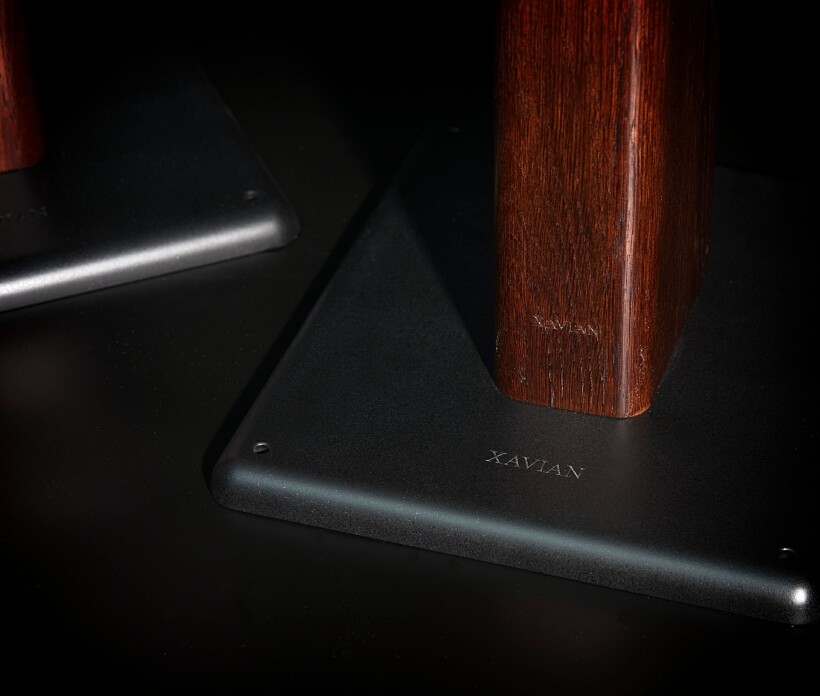
After that first evening it was already clear to me that nothing or not much had changed in the Roberto’s sound philosophy he told me about those 10 years earlier. Virtually each subsequent album delivered an exceptionally musical and natural presentation. These are not some particularly analytical, remarkably detailed loudspeakers, and yet their presentation provides a huge amount of information, provided a recording and a whole setup deliver them to the Corallo Esclusivo. It’s only that all this information is smoothly combined into a particularly coherent whole, in which the whole is way more important than all these individual elements. Each subsequent album, as long as it was at least decently recorded, proved that a musical genre actually did not matter much. The Corallo Esclusivo turned out, a bit to my surprise, to be able to play anything I throw at them, although, due to their size, they do it in their own way, and they they shine most when it comes to smaller ensembles and acoustic music. Therefore, Ritenour’s electric guitar on the above-mentioned album, sounded as convincing as the classical guitar duo from the album produced by Mr. Kazuo Kiuchi with Mario Suzuki recordings, or from Paco Pena’s brilliantly recorded “Flamenco Puro Live”, also released on XRCD.
Classical guitars delighted me with the lightness of the strings, the speed of transients, beautiful timbre, great micro-dynamics, the right proportions between the strings and the body, and the appropriate depth of sound, due to the latter. Electric guitars, on the other hand, had both the touch of rawness and the saturation and density necessary to deliver a credible sound of this instrument. Although, as I’ve mentioned, the details do not play the main roles in the presentation of the Corallo Esclusivo, it does not mean that they are not there. All these small elements, such as fingers sliding along the strings, tapping on a soundboard, a gentle buzzing of a string on a fret – all these tiny features can be heard (in the background) with these speakers and although they do not attract attention by themselves, they do significantly increase realism and authenticity of every performance. The fabulous recording of the flamenco music amazed me not only with exceptionally natural-sounding guitars and expressive vocals. It also proved the advantages of a closed enclosure in terms of bass reproduction. Although the size of the Corallo Esclusivo limited the physically perceived power of the dancers’ heels striking the floor which is immense when listening using large speakers (my Ubiq Audio Model One, for example), they were still able to reflect the lightning speed and immediacy of each of them in a fashion hardly achievable for any other speakers I know.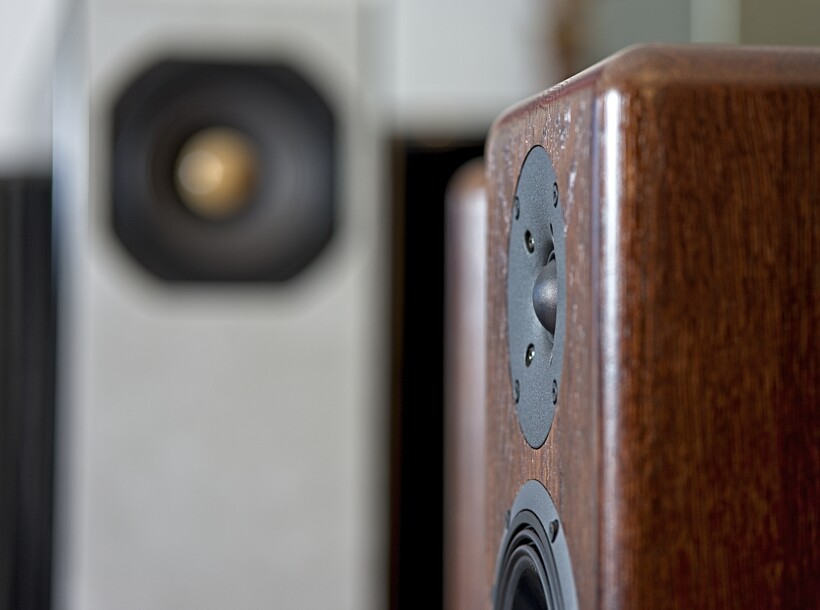
As a way to balance my delight described above, let me add that in the case of electronic music with a powerful, low-reaching bass, say Dead Can Dance albums, or with a powerful-sounding bass guitar, such as Miles Davis’s “TuTu” with Marcus Miller, such recordings did not sound as impressive on Xavians, as on similar-sized bass-reflex designs. In the latter case, say Dynaudio monitors, the support provided by the bass reflex creates an impression of a deeper, better extended, more weighted bass. The Corallo Esclusivo, in comparison, sound a bit more dry, less massive on such discs (of course I mean the relative mass – these are small loudspeakers after all) than their vented counterparts. For me, however, this purity and better differentiation of low end, both in terms of timbre and, which is very important, dynamics, are always preferred and that’s why I like closed cabinet designs so much, but, let me repeat it, it is obviously a matter of individual preferences.
Several albums with well-recorded cymbals showed that the Xavians are able to offer seemingly contradictory features. On one hand, they can differentiate the cymbals beautifully, make them sound very vivid, but at the same time it is a weighted-down vibrancy, there is no aggressiveness, no brightening, no artificial hardening of it. The sound reproduced by the AudioBarletta tweeters reminded me a bit, in terms of sonic character, of that of Dynaudio domes. The best ones from the Danish manufacturer are even more resolving (to my ear), even a bit more refined, but the difference is that big, and the character is similar. And it was the Esotars that were always one of the reasons why I not only appreciated, but also truly liked (because it is not unambiguous at all) and still do, all Dynaudio loudspeakers (and their stand-mounts have a special place in my private „hall of fame”). No wonder the Corallo Esclusivo caught my ear so quickly and effortlessly, so to speak.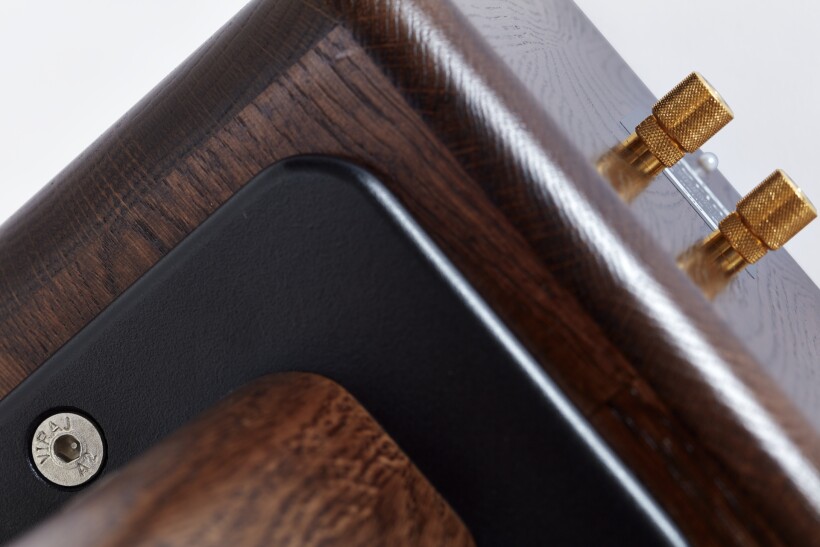
Obviously, this fondness was not based only on this excellent treble, but also midrange and its upper part in particular. It was clear to me after listening to numerous operatic arias, where the sopranos do not always sound as clear, strong and natural as with the tested Xavian speakers. They gave me a chance to reach for older vinyl records with Maria Callas or Montserrat Caballe in leading roles, which sounded absolutely beautiful, clean, convincing and highly expressive. The fact that cracks and pops, characteristic of old vinyl records, did not bother me at all, was a welcomed bonus feature. It was the very ability of the Xavian Corallo Esclusivo to convey the emotional side of these recordings combined with the beautifully rendered timbre of the greatest operatic voices that made spend a lot of time listening to all my favorite operas composed by Mozart, Bizet, and Verdi.
Although, due to the physical limitations of these not very large monitors, the scale of events on opera stages was not so huge, and the sound did not have such a mass, such momentum as with my Ubiq Audio Model One Duelund Editon (large, 3-way floorstanders also featuring closed cabinets), I was able to quickly get over that already at the prelude stage of each opera. The Czech speakers, disregarding these limitations, tended to focus a bit more on the singers, perfectly conveying not only the timbre and texture of each voice, but also involving the listener (me) in the story being told. Each time (also due to selection of my favourite titles) it was a very expressive, interesting, addictive performance, bursting with emotions, perfectly rendering the mood, which in turn exceptionally well replaced the visual layer of operas, information that we perceive with our eyes, complementing the sound. A large stage, completely detached from the loudspeakers, built starting from the line connecting them, plus the precision of the location of each phantom image meant that I could effortlessly follow a selected character moving around in the width and depth of the stage.
The manufacturer seems quite honest about the lowest frequencies his speakers are able to reproduce, as according to specifications the Corallo Esclusivo go as low as 59 Hz. Looking at the number one may anticipate that the presentation may lack some bass, at least in some recordings. The more so that the closed cabinets deliver a somewhat different bass than the most popular, vented ones. It is cleaner, more precise, faster, tight, there is no bloom, no „boom” that many bass-reflex based speakers serve (to a greater or lesser extent). The point is most people are used to the way the latter reproduce bass so any other way is a „wrong” one. I myself use the GrandiNote MACH 4 in vented enclosures (but this is not a classic bass-reflex solution) and the aforementioned Ubiq Audio Model One, i.e. large 3-way floorstanding speakers in closed cabinets, featuring 12-inch bass woofers. Using these two, quite different in terms of sonic character, pair of speakers allows me to recognize qualities of various solutions. Also, it familiarized me intimately with performance of close cabinet speakers, and I would even say that I prefer this solution (even though, that vented one in MACH4 is remarkably good too). That is probably why the Corallo Esclusivo delighted me from the very beginning of listening to music performed by such artists as Marcus Miller or Stanley Clarke, but also by, for example, Steve Gadd playing on drums. And although in the case of electric bass guitars there was a lack of the lowest “slam” at times, again the immediacy, tightness, the fast transients made listening to these masters of this instrument a pure pleasure.
Summary
For various reasons, partly beyond my control, I hosted the Xavian Corallo Esclusivo in my system for several months. It gave me an opportunity to listen to them a lot more than it is possible with most reviewed speakers. It was not the only advantage of the situation, other was being able to pair them with various amplifiers, my own and reviewed ones, as well as with some other components (reviewed in the meantime) that temporarily replaced my own ones. Even after such a long time (for a test, I mean) I didn’t have enough of these small beauties. I would even say that my respect and affection for them grew with each passing week. I have a certain weakness for stand mount speakers, because although the sound is not as complete (in the sense of a scale and limited band extension, mainly in the lower end) as with floorstanders, it is different, but this particular difference seems to appeals to me in a special way. Coherency, natural flow of music, great dynamics, precision, clarity, bass differentiation and tightness rarely observed with bass-reflex designs, the ability to completely disappear from the room, spaciousness and openness of sound are still only some of the numerous advantages of the Corallo Esclusivo. These are fantastic sounding speakers small to medium-size rooms and their make&finish are on par with many much more expensive competitors. What more could you expect from your speakers?!
Technical specifications (according to the manufacturer):
- Frequency range ( -3dB in axis): 59 – 20000 Hz
- Connectors 1 pair of gold-plated Xavian terminals
- Impedance 8 Ohm
- Crossover frequency 2500 Hz
- Sensitivity ( 2,83V / 1m ) 87 dB
- Recommended amplification 30 – 120 W
- Dimensions (HxWxD) 355 x 230 x 236 mm
- Weight (a piece) 10 kg
Price (when reviewed):
- Xavian Corallo Esclusivo: 2.100 EUR
Manufacturer: XAVIAN
Associated equipment:
- Analogue front end: J.Sikora Standard MAX turntable, J.Sikora KV12 tonearm, AirTight PC-3, phonostages: Grandinote Celio mk IV, ESE Lab Nibiru V 5.
- Digital source: a passive, custom server with WIN10, Roon, Fidelizer Pro 7.10, JCat USB Femto card with iFi power supply, Hdplex linear power supply for PC, JCAT USB Isolator
- D/A Converter: LampizatOr Pacific +Ideon Audio 3R Master Time (USB signal regenerator)
- Power amplifiers: GrandiNote Shinai, LampizatOr Metamorphosis, Accuphase E380, Circle Labs A200, Lavardin ISx Reference
- Preamplifier: Audia Flight FLS1
- Loudspeakers: GrandiNote MACH4, Ubiq Audio Model ONE Duelund Edition.
- Interconnects: Hijiri Million, Hijiri HCI-20, TelluriumQ Ultra Black, KBL Sound Zodiac XLR, David Laboga Expression Emerald USB, TelluriumQ Silver USB
- Speaker cables: LessLoss Anchorwave
- Power cables: LessLoss DFPC Signature, Gigawatt LC-3
- Power: Gigawatt PF-2 MK2 and Gigawatt PC-3 SE Evo+; a custom power line with Gigawatt LC-Y in-wall cable; Gigawatt G-044 Schuko and Furutech FT-SWS-D (R)
- Racks: Base VI, Rogoz Audio 3RP3/BBS
- Anti-vibration accessories: ROGOZ-AUDIO SMO40 and CPPB16 platforms and ROGOZ AUDIO BW40MKII feet, Franc Accessories Ceramic Disc Slim Feet and Wood Block Platform


